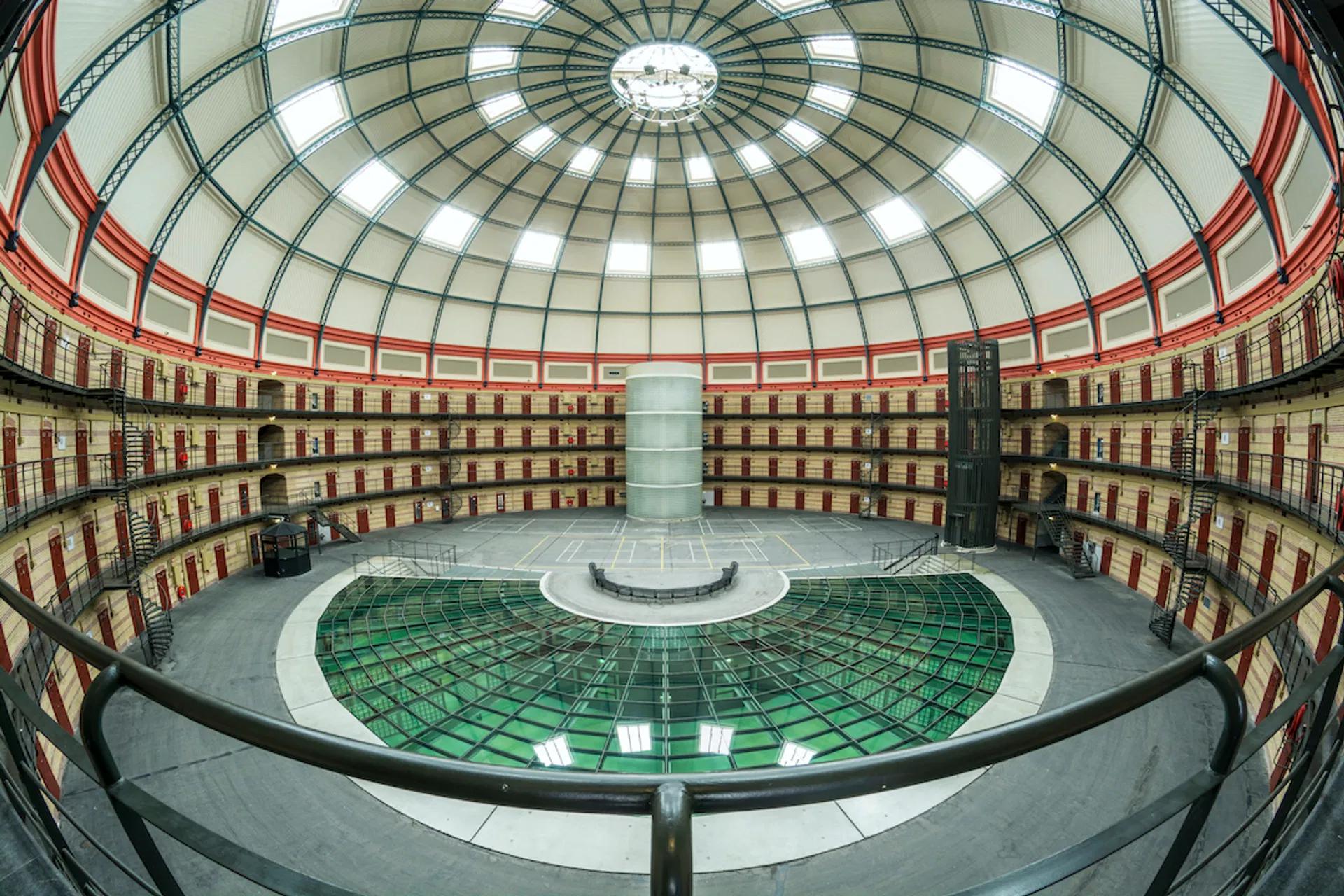History Koepelgevangenis
The iconic dome prison in Breda was part of a judicial complex in the centre of Breda. The prison was built between 1882 and 1886 according to a design by Johan Frederik Metzelaar. The dome building features an open circular central space with a height of over thirty meters, crowned by a dome with iron trusses and a diameter of 53 meters. The theory behind the round shape for a prison was devised by Jeremy Bentham. This way, the guards could oversee the entire prison from the centre. The cell block contains 198 identical cells.
2016: Final Closure
In addition to the specifically monumental locations such as the dome, women's prison, courthouse, and chapel, the prison site also contains several spaces of various sizes and appearances. The site also includes a more modern prison built in 2004. As of 1 January 2016, the complex was definitively closed as a penitentiary institution.
The three from Breda
The Three of Breda were three German war criminals serving life sentences in the Breda Penitentiary. They were the last war criminals imprisoned in the Netherlands. Initially, there were four of them: Willy Lages, Joseph Kotälla, Franz Fischer, and Ferdinand aus der Fünten.
All four had been involved in the persecution of Jews. In 1966, Willy Lages was deported to Germany. Doctors had claimed he was terminally ill, but this turned out to be untrue. Thus, the Four of Breda became the Three of Breda. In the late 1960s, discussions arose about the release of the three remaining prisoners. The three submitted a request for clemency. In the end, the Parliament voted against the release of the Three of Breda. Kotälla passed away in 1979. Ten years later, both Fischer and Aus der Fünten were eventually released. Both were very elderly and died shortly after their release.
Escapes from the Dome Prison
Hulda Kiel - also known as the 'spoon woman' - gained national fame in 2010 when she escaped from the Breda Penitentiary Dome during Carnival with a spoon. She managed to escape through a self-dug hole via Kloosterlaan. It took a month before she was apprehended again. After that, she had to serve an additional 21 months in prison. She never regretted the escape: she met the father of her child during her 'free' time.
Many people had escaped from the Penitentiary Dome long before. In 1952, seven war criminals escaped using a ladder and fire hose over the outer wall. In 2002, a detainee climbed over the wall during recreation time. In the same year, someone escaped through the emergency building using sheets. In 2011, another person escaped while being transported to the hospital and was never found.
Dome prison for sale
Currently, the Breda Penitentiary is for sale. Previously, it was managed by FutureDome Events, an events agency that organised events and games activities here, such as PrisonEscape. There are also small, starting entrepreneurs located there.
